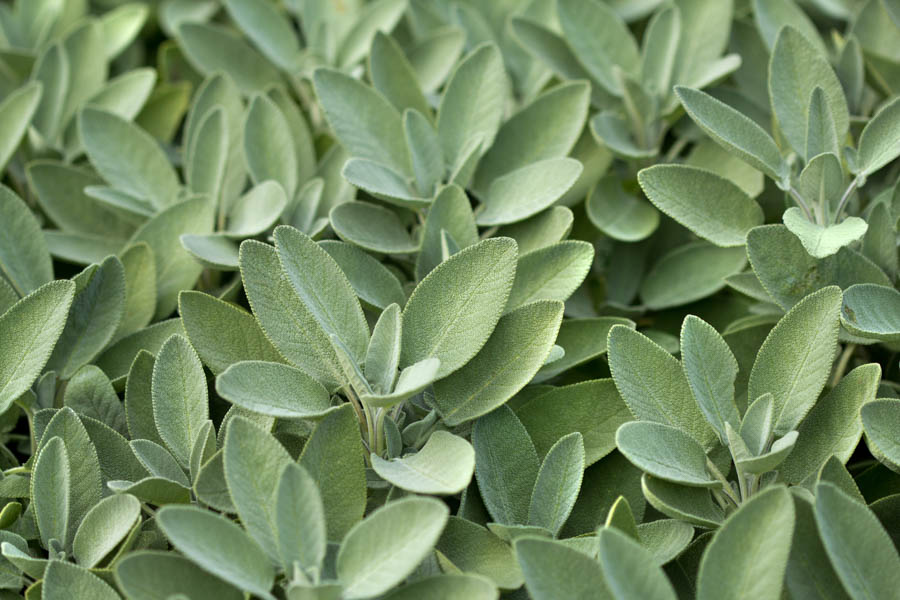Sage in the Mediterranean Garden

As a Mediterranean native, sage has similar cultural needs to thyme, rosemary and lavender and makes an excellent addition to a sustainable, drought tolerant or edible garden. Sage is a perennial grown for both its attractive appearance and its value in cooking, When mature, it is a low maintenance plant that comes in a range of varieties from common sage with broad grey-green leaves and piney scent to purple, yellow and variegated varieties.
Sage prefers full sun in moderate to warm climates, but does not enjoy the extreme heat of particularly hot inland valleys, where it will be happier with some afternoon shade. Beware that when given too much shade, sage becomes leggy and unattractive. Sage tolerates light frost.
Sage prefers well-draining soil neutral to slightly alkaline soil, but otherwise tolerates a wide range of soils types. Sage does not require particularly fertile soil and typically does not require additional fertility once planted.. Particularly fertile soil may promote lush growth at the expense of flavor.
Sage can be planted in difficult garden areas where other plants may struggle, such as near rocks or garden edges.
Young sage plants need regular water, once or twice per week for the first 2-3 weeks after planting. As sage plants mature, water progressively deeper and less frequently to encourage root development. Water established sage plants during prolonged periods without rain. As with many drought tolerant plants, sage is best watered in the morning with drip irrigation: this ensures deep and infrequent watering and prevents sage plants from sitting in cool, wet soil overnight. Do not water sage plants during periods of rain. Do not place sage in garden locations where water is likely to collect or soil is likely to remain waterlogged. Overwatering may result in root rot.
Mature sage develops the strongest flavor for cooking when given minimal water and no fertilizer.
Refrain from mulching sage with any type of most mulch or compost: the additional moisture may encourage rot.
Don’t know your GardenZeus climate zone? Click here.
GardenZeus Quick Tips: Rosemary in the Sustainable Garden
Thyme as an Element in a Sustainable Garden
Planting Lavender in Mediterranean Climates
Chlorine, Soil, and Watering Gardens (Chlorinated Water, Part 1 of 2)
Remove Chlorine When Watering Organic Gardens (Chlorinated Water, Part 2 of 2)


